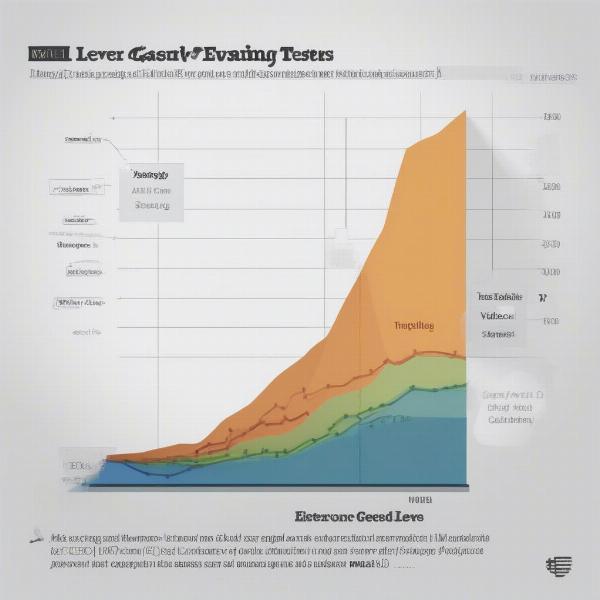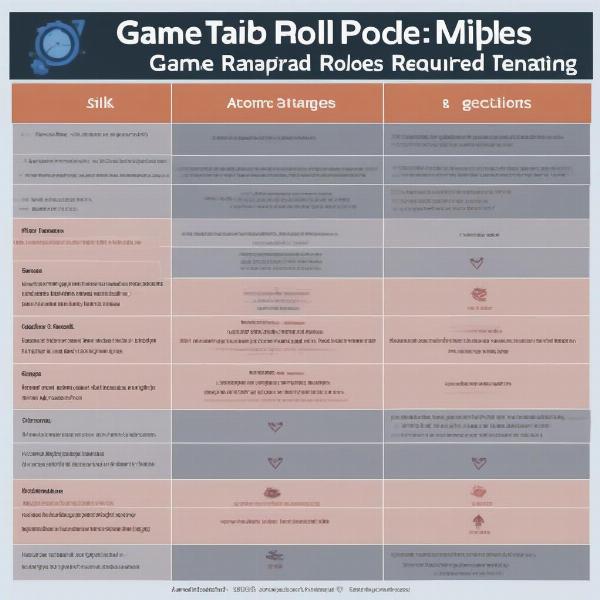Welcome to supremeduelist.blog, where we dissect the gaming world. If you’re dreaming of turning your passion for play into a paycheck, you might be wondering, “What’s the least I can expect to earn as a video game tester?”. The truth is, the entry level pay can vary considerably, so let’s dive deep into the realities, pitfalls, and practicalities of starting a career in game testing.
This article will explore the factors influencing minimum pay for game testers. We will cover the types of testing roles, geographic influences, and the crucial skills needed to maximize your earnings, while also managing expectations about what this career path realistically entails.
Understanding Entry-Level Game Tester Pay
The allure of getting paid to play video games is strong, but the reality of the financial compensation, especially at the entry level, often presents a different picture. The least amount you can make as a game tester is not fixed; it’s determined by a variety of factors, including the type of testing, your location, and the company you’re working for.
Typically, entry-level game testers, often working as temporary or freelance contractors, are at the lower end of the pay scale. This can mean an hourly rate that might not seem too impressive compared to other roles in the tech sector. However, understanding the underlying reasons behind this rate can help manage expectations and find ways to improve your earning potential.
Factors Influencing Minimum Pay
Several elements contribute to the minimum you might earn as a video game tester:
-
Type of Testing: Functional testing, which involves systematically playing through a game to find bugs, often pays less than localization testing or user experience testing.
-
Location: Testers in countries or cities with lower living costs may see lower wages. The demand for testers in specific gaming hubs could also influence rates.
-
Experience: As an entry-level tester, your initial pay will reflect your lack of experience. Over time, as you build a portfolio, your value increases.
-
Company Size: Large, established companies may offer better pay and benefits compared to small studios or indie developers, but this is not a fixed rule.
-
Contract Type: Full-time positions usually have a more stable salary, while freelance or temporary work is typically hourly.
-
Project Complexity: Games with more complex systems and extensive testing needs might offer better pay per hour.
 game-tester-salary-range
game-tester-salary-range
“The key to maximizing your potential as a video game tester is to start building a diverse skillset early on, even if it means taking lower-paying entry roles initially,” notes Anya Sharma, a career development consultant with experience in the gaming industry.
The Reality of Minimum Wage for Game Testers
It is possible that some entry-level game testers might start by earning close to the local minimum wage in their region. This is not to say that game testing is not a viable career, but rather that setting realistic expectations is key. The “least amount” can range quite a bit, but it typically hovers around what you might earn in similar entry-level customer service or data entry jobs. It’s a starting point, not a career ceiling.
Types of Game Testing Roles and Their Compensation
Not all game testing jobs are the same, and each type comes with its own compensation structure. Understanding these differences is essential for navigating your career path.
Functional Testing: The Entry Point
Functional testing is usually where most beginners start. It involves playing the game and documenting any bugs or glitches that are encountered. As the entry-level position, this type of testing tends to have the lower pay.
- Tasks: Play the game through various scenarios, report bugs, and verify bug fixes.
- Pay Range: Typically hourly wages at or slightly above the local minimum wage.
Localization Testing: Beyond the Game
Localization testers check games for proper language and cultural adaptations for different markets. This can involve linguistic, cultural, and technical aspects of game presentation.
- Tasks: Review translations, identify cultural inaccuracies, and ensure the game resonates with different audiences.
- Pay Range: Generally higher than functional testing because of the specialized skill set.
User Experience (UX) Testing: The Player’s Perspective
UX testers focus on how players interact with a game, evaluating intuitiveness, user interface design, and overall game flow. It involves assessing the game from the player’s perspective.
- Tasks: Analyze player reactions, gather feedback, and suggest improvements to usability and design.
- Pay Range: Usually offers a higher pay rate because of the specialized insights they provide.
Performance Testing: Ensuring Smooth Gameplay
Performance testers examine the game’s technical stability, frame rates, and overall performance across different devices. This requires a good understanding of game hardware.
- Tasks: Stress test game systems, document performance issues, and suggest optimizations.
- Pay Range: Pay can be quite variable but often higher than functional testing because of the technical skill requirements.
“I remember when I first started, I was so excited to just be playing games, the pay wasn’t a lot but the experience of breaking games was thrilling,” says Liam Rodriguez, a Lead Game Tester. “Now, as a lead, I look back and realize how much I’ve learned in the technical side of things.”
 game-testing-roles-pay
game-testing-roles-pay
Strategies to Increase Earning Potential
While the minimum pay for game testers can be low, there are several strategies you can use to increase your earning potential.
1. Build a Strong Portfolio
Your experience and skills are vital in landing higher-paying jobs. Actively build a portfolio that demonstrates your expertise. This could include documenting your previous testing projects, reporting methods, and any specific skills related to game testing.
2. Specialize in Demand Skills
Focus on developing in-demand skills such as testing in specific genres (e.g., MMOs, FPS), proficiency with bug tracking software (Jira, Bugzilla), or familiarity with programming or technical scripting.
3. Network Within the Industry
Making connections within the industry can open doors to better opportunities. Attending gaming conferences, participating in online forums, and connecting with industry professionals on LinkedIn can be valuable.
4. Seek Certifications
Certifications related to game testing and quality assurance can increase your credibility and value. Consider getting certifications such as ISTQB (International Software Testing Qualifications Board) to prove your expertise.
5. Negotiate Your Rate
Don’t be afraid to negotiate for a higher rate. Many hourly rates or per-project compensation are not set in stone. Before agreeing to a low wage, research typical rates and leverage your skills in discussions with potential clients.
6. Move to higher cost of living regions
While it is not always the most desirable option, moving to an area where gaming is a bigger business can result in higher pay due to the increased demand for workers and the higher cost of living.
Frequently Asked Questions About Game Tester Pay
Understanding the nuances of game tester pay can help you make informed decisions about this career path. Here are some common questions:
What is the average hourly rate for entry-level game testers?
The average hourly rate can vary considerably based on location, but entry-level testers often earn close to minimum wage, sometimes slightly above. It is important to remember that this is an entry level position, and better compensation will come with time, skill, and portfolio.
How does the pay compare to other roles in the gaming industry?
Compared to roles such as game design or game development, the pay for entry-level game testers is generally lower. However, career growth is available by moving into roles that demand greater skill and expertise such as lead tester or UX specialist.
Can I work remotely as a game tester?
Yes, many game testing jobs, particularly functional testing, are offered remotely. This can provide flexibility, but your location can still influence your earnings.
Is game testing a sustainable career with opportunities for advancement?
Absolutely. Game testing can serve as a stepping stone to more specialized and better-paying roles within the gaming industry, such as lead tester, QA analyst, or even game producer.
What are the most lucrative forms of game testing?
Generally, UX testing, performance testing, and localization testing are considered some of the highest-paying forms of game testing. These roles require more specific knowledge and skills.
What is the highest paying game tester job?
The highest paying positions in game testing are often found in highly specialized QA areas or team leadership roles, with roles such as lead tester, QA engineer, or in senior quality management positions earning significantly more than entry level testers.
Conclusion: Managing Expectations and Planning Your Path
The “least amount” you can make as a game tester might not be high, particularly in entry level positions. This often leads to people moving on from the industry, however understanding this potential allows you to set realistic expectations while working towards opportunities for growth and better pay. By building your portfolio, specializing in valuable skills, and networking within the industry, you can significantly increase your earning potential over time. Remember, game testing can be a rewarding career path for passionate gamers who are willing to put in the work. At Supreme Duelist Blog, we aim to guide you with realistic expectations and strategies to succeed in the gaming industry. Your journey to a successful game testing career starts now!
Leave a Reply